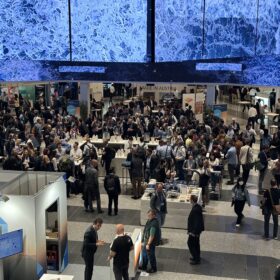Scientists unveil results of full-year analysis on building-integrated photovoltaics
Scientists from Denmark have examined three façades installed on a mobile office container to conduct building-integrated PV experiments.
New model to assess performance of building-integrated photovoltaics based on PCM
Researchers in China have analyzed the effect of phase change material on BIPV, and created an artificial neural network to forecast its effect on system temperature. The proposed approach reportedly achieved superior predictive performance compared to earlier methods.
Using texturized glass in building-integrated photovoltaics
Researchers from Poland have assessed how texturized glass used as the front cover of building-integrated photovoltaic panels affects performance. They have found power yield could be up to 5% lower compared to modules based on conventional glass, with reflection parameters being up to 88% in visible region.
Freesuns brings PV to Swiss heritage buildings
Swiss module manufacturer Freesuns has installed 33,300 of its solar roof tiles on three historical buildings in the Swiss town of Neuchâtel.
Building-integrated photovoltaic system integrating PCM on sides
Scientists have designed a new building-integrated PV system that uses 30 mm of phase change material on each side of the wall. The array reportedly achieved superior thermoelectric coupling performance compared to reference BIPV systems without PCM.
‘You can’t stop at the door of the lab’ – EU PVSEC 2024
The 41st European Photovoltaic Solar Energy Conference (EU PVSEC) will draw to a close in Vienna this afternoon. Discussions at this year’s event leave little doubt that solar installations will continue to see impressive growth over the coming years. All week there has been plenty of optimism around new policy and technical innovations driving more solar into both electricity grids and urban and rural environments. For Europe, however, the lack of any meaningful capacity for manufacturing these promising technologies locally, puts something of a dampener on things.
BIPV for prefab net-zero housing trials in Australia
ClearVue Technologies, an Australia-based supplier of smart building materials, is providing a combination of its building-integrated photovoltaic (BIPV) technology and solar cladding panels in a prefabricated house trial trial.
Platio debuts new walkable solar panels
The Hungarian company said its new products can handle a load of 300 kg. The modules are available with power outputs of 23.65 W and 59.68 W and can be integrated with wood-plastic composite, wood, stone, or ceramic floorings.
Paxos Solar unveils glass-glass PV tile with heat pump integration
Paxos Solar has developed a new glass-glass PV tile that integrates with heat pumps, featuring Longi’s back-contact solar cells. The 44 W, 59.5 cm x 48 cm tile can also produce heat for residential systems.
Lightweight ventilated BIPV system for low-load rooftop applications
Scientists in China have designed a ventilated building-integrated photovoltaic system that relies on flexible solar modules with a weight of 6 kg/m2. The system also uses an airflow channel under the PV panels to reduce their operating temperature and increase their power yield.










